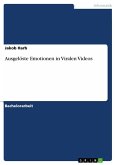High Quality Content by WIKIPEDIA articles! A semantic link is a typed link where the element itself includes meaningful information about the link (semantics). The link describes some external relationship or issue. Such links are the basis of a semantic network. The Semantic Web as described by Tim Berners-Lee is one example of the many attempts over many decades to define standards for semantics of links. Among the earliest were those used by early hypertext systems in the 1980s such as KMS, NoteCards and IBIS. HTML included rel and rev attributes in its hyperlinks to store additional information about the nature of the links. There was at least one attempt (in 1994) to define a set of standard rel and rev attributes to attach to HTML anchor tags to make them into typed links that would express semantic properties of the link. Although this IETF RFC failed, it set the standard for many other attempts to follow. Over the next ten years, a great many attempts to set standards for particular subsets of the World Wide Web rose and fell.
Bitte wählen Sie Ihr Anliegen aus.
Rechnungen
Retourenschein anfordern
Bestellstatus
Storno








